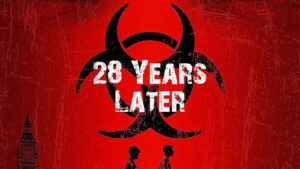The Puppy in the Trash—and the Shadow That Followed
At first glance, I thought he was just sleeping.
Curled up among crushed soda bottles and dried leaves, the puppy was almost invisible, tucked between jagged stones and a rusted can. His fur was pale and so matted it blended into the garbage. But as I crouched down, he lifted his head and looked at me.
His eyes didn’t show fear—only resignation.
As if he had given up on being noticed. On being saved.
I pulled out my phone to film, unsure if I’d need the footage to get help. I whispered, “Hey, buddy. You okay?” His ears twitched ever so slightly. No bark. No growl. Just a soft flick of the tail against a plastic bag.
Then something unexpected happened.
A gust of wind blew, and a sharp sound echoed off the alley walls. You can hear it clearly in the video. But what came next—what the camera caught—wasn’t just sound.
It was movement.
Behind me.
I didn’t notice it until later, watching the video at home. While my full attention was on the puppy—still and quiet—something shifted in the background. A dark shape. Low to the ground. Quick. Quiet. And far too close for comfort.
I watched the footage over and over, zooming in on that blurred form. It wasn’t human. It wasn’t a dog. It was bigger than anything that should have been there. And it was gone in an instant.
That night, the puppy lay curled on my couch in an old blanket. I named him Rusty—not for his color, but for the rusted cans where I found him. He flinched at every touch, as if expecting pain instead of kindness. Still, I could tell he wanted to trust.
But my thoughts kept circling back to the video.
To what I hadn’t seen in real life… but had captured on camera.
Signs of a Bigger Threat
Rusty never barked. Not once. Not when the doorbell rang. Not when cars passed. He was unnaturally quiet.
Then, one night while reading local news, I found an article that made my skin crawl. Hikers in nearby woods had reported sightings of a large, unknown predator. Some called it a cougar. Others thought it was a wolf. Authorities dismissed it, but one detail stood out: several injured animals had been found at the edges of town.
Small animals.
Like puppies.
The pieces clicked. Rusty hadn’t been dumped. He had escaped. From something. Something big. And possibly still nearby.
Two nights later, I woke to the sound of scratching at my bedroom window. When I turned on the light, there was nothing—except Rusty, staring silently out the glass. He let out a low whine—the first sound I ever heard him make.
Then I saw it.
Two glowing eyes in the bushes, watching us. They blinked… and vanished.
Calling for Help
I contacted Theo, a retired wildlife biologist and an old friend. When I showed him the video, he didn’t laugh. He didn’t doubt.
“This isn’t just a stray animal,” he said. “It’s smart. Calculating. This kind of behavior suggests it’s testing boundaries. And your dog? It might be marked. Or targeted.”
Together, we set up motion-activated cameras and installed perimeter alarms. Theo even gave me a whistle mimicking animal distress calls—a warning signal meant to deter predators.
That night, I waited.
And then… it returned.
The Confrontation
A deep growl broke the silence. Then came soft footsteps on gravel.
Out of the shadows emerged the predator—not a cougar, not a wolf. A coyote, but twisted and sickly. Mangy. Starving. Its eyes glowed unnaturally.
Before I could react, Rusty jumped between us, growling for the first time. He stood firm, baring his teeth.
The coyote paused. Hesitated. Then, with a final snarl, it turned and vanished into the dark.
The Aftermath
Theo reviewed the footage. “It’s weak,” he confirmed. “Driven by desperation. Probably diseased. But it recognized Rusty. That much is clear.”
Coyotes are territorial. Perhaps Rusty had wandered into their domain. Maybe he was attacked… or nearly recruited.
But he survived.
Now, weeks later, Rusty is thriving—stronger, more confident. He still doesn’t bark, but he doesn’t need to. His quiet presence speaks volumes.
And I’ve learned something too.
Sometimes, the scariest monsters aren’t the ones we can see—but the fears we carry inside. Rusty didn’t just escape danger—he taught me what it means to face it.
If this story moved you, share it.
Let others know that courage can come in the smallest, quietest forms—and that sometimes, rescuing a life means being rescued in return.






